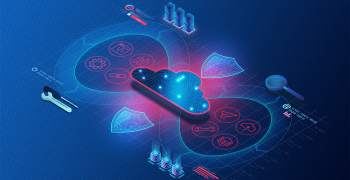Infrastructure as Code: Turning Enterprise IT Architecture into Software

In the fast-evolving digital paradigm of businesses, the role of IT cannot be overstated. However, as we make definitive technological headway, the current IT infrastructures and processes also require considerable upgradation. With the emergence of technologies such as artificial intelligence (AI), machine learning (ML), cloud computing, and DevOps, more can now be leveraged from varied IT infrastructures with lesser manual intervention. In other words, the use of emergent technologies holds the key to a more robust IT infrastructure management, which will then result in faster time to value, increased efficiency and productivity, and reduced IT costs.
Among many lessons imparted by the current pandemic, one of the most significant ones is for businesses to rediscover their operational models to ensure drastically reduced reliance on human intervention. With that gaining emphasis, organizations are now future-proofing their IT infrastructure by increasingly focusing on available technologies that can automate their IT operations. As the number of users and smart devices increases rapidly, the traditional enterprise IT infrastructure is proving inadequate for new-age challenges. The glaring shortcomings of conventional IT infrastructure is gradually giving way to more holistic IT solutions, courtesy of cloud. It is not only ensuring operational scalability and workforce mobility, but in conjunction with DevOps, also speeding up production and delivery by merging development and operations. But the quest for more and better has kept the wheel of innovation moving, and the latest revolutionary development is the codification of IT infrastructure configuration and management – popularly known as infrastructure as code (IaC).
Challenges Drive Opportunities
To better understand the need and scope of IaC, one must analyze the pertinent IT infrastructure management challenges plaguing businesses of today. Broadly, the traditional method of infrastructure management has three critical issues – inconsistency, poor scalability, and high costs.
Given the over-reliance on human intervention, the traditional IT infrastructure management is prone to inconsistency and avoidable errors. Network engineers, hardware technicians, system administrators, software developers and testers, and database administrators, among others, need to work in tandem to achieve desired results. But, with so many people involved, discrepancies are commonplace. Furthermore, manual functionalities such as interlinking, version controlling, and load balancing only add to the complexities of IT infrastructure management.
On-premise infrastructure is difficult to expand and unexpected surges in access lead to server unavailability. Scaling the infrastructure up or down is a rigorous and time-consuming task, and poor scalability of on-premise infrastructure has proved to be a key driver of application of cloud solutions. Due to considerably larger workforce needed for IT infrastructure management and due to poor scalability of on-premise infrastructure, the traditional IT infrastructure configuration and management incurs high costs which are also repetitive in nature. The real estate cost is another overhead too big to be ignored.
Cloud and DevOps have brought flexibility and agility to the table, enabling organizations to rapidly deploy applications and scale their IT infrastructures. The obvious next step now is automation of the various IT functionalities. In order to optimize all that cloud and DevOps has to offer, automation of infrastructure management is the key.
Vitalizing New-age IT Infrastructure Management with IaC
What is IaC? To put it simply, IaC is a method of provisioning and managing IT infrastructure using source code instead of standard operating procedures (SOPs) and manual processes. It automates infrastructure deployment by turning all relevant tasks into code files that can be run repeatedly in a consistent manner. These codes can be edited, copied, and distributed as required, allowing organizations to set up, modify, and manage infrastructure easily, quickly, consistently, and for a fraction of the cost.
To understand the value propositions of IaC, it is important to analyze the configuration process first. The two broad aspects of configuration are its management and its orchestration. IaC can be further classified as either declarative or imperative. Declarative IaC only defines the desired infrastructure to be set up, which is the final output. Imperative IaC, on the other hand, defines the output and also the steps to achieve it. The root of the difference between the two lies in the programming language used for the purpose. Some of the leading IaC tools are AWS CloudFormation, Chef Infra, Google Cloud, and Terraform.
Configuration management tools, such as SaltStack, Puppet, Ansible, and Chef, are instrumental in installing and managing software on existing server instances. They ensure that manual configuration and ad-hoc scripts are no longer required. In contrast, Terraform is a configuration orchestrator that is designed to provision server instances, while letting management tools configure the servers. Orchestration enables a higher-level provisioning of environments compared to configuration management. This allows for better coordinated configuration, especially across complex environments. Terraform ticks all the right boxes for a holistic orchestration experience that is fast turning into an important need for organizations.
While choosing the right IaC tool that is best suited to the organizational needs and environment, enterprises must consider the following:
- Do we need a configuration management tool or a provisioning tool?
- Does the tool cater to mutable infrastructure or immutable infrastructure?
- Does the tool use a procedural language or a declarative language?
- Does the tool need a master or is it master-less?
- Does the tool need an agent or is it agentless?
- Does the tool need to cater to a large community or a small community?
- Is the tool mature or cutting edge?
- Does the environment use multiple tools together?
Terraform enjoys a distinctive advantage over the various configuration management tools available in the market. Here is a quick look at those advantages.

Figure: The Terraform Advantage
Emphasis on rapid provisioning of servers, handling of ephemeral logs and data, and seamless deployment of automation is paramount for organizations, and for that they require smooth infrastructure orchestration as well as application. This is where Terraform is crucial as a robust orchestration tool that can work seamlessly with configuration management tools, such as Ansible and SaltStack. By the virtue of being cloud agnostic, Terraform provides optimized end-to-end management efficiency of multi-cloud, multi-offering environments. In other words, Terraform is capable of building everything – networks, security objects, scaling objects – on cloud up to the point of server configuration.
IaC is Vital for IT Infrastructure
For all the capabilities that IaC brings to IT infrastructure management, it is a vital cog in the IT wheel of enterprises and the missing link that CTOs and CIOs need to maximize the potential of cloud and DevOps. To begin with, the automation capabilities of IaC is paramount for enterprises to achieve configuration consistency. The fundamental objective of automating any set of actions is to eliminate human errors from IT infrastructure management, and codification of infrastructure-related functions in the form of IaC does just that. As a result, IT professionals do not need to fix inconsistencies and it also makes the infrastructure streamlined for optimum utilization. IaC also supports versioning of the configuration files, making each configurational modification traceable, and in turn, eliminating the possibility of any discrepancy.
Another key takeaway of IaC is speed and simplicity. It is fair to say that IaC is to IT infrastructure engineers what plug-and-play applications are to laymen. It simplifies infrastructure set-up and management to the extent of just running the configuration files. What traditionally takes weeks to complete can be done in minutes using IaC. Similarly, IaC can be used to deploy the infrastructure of any stage of the software development life cycle (SDLC). Programmers can define and deploy sandbox environment to securely develop in isolation and testers can replicate the release environment for testing. The optimization of DevOps does not only reduce the time to value, but also increases the overall efficiency and productivity.
With high costs of IT infrastructure management continuing to pose multifaceted challenges to enterprises, IaC has come to the rescue by automating manual tasks. This has eliminated the need for various teams of professionals, and as a result, the CTC of employing or contracting professionals for this purpose has reduces drastically. Besides, as the inconsistencies and discrepancies are ironed out, the infrastructure can be used at its optimum. This results in fewer lost opportunities and more business.
Given the advantages and benefits of IaC, it is only a matter of time before enterprises embrace it as they have done cloud and DevOps. History bears testament to the fact that just like the early bird catches the worm, early digital adopters also gain major business advantages over their competitors. The time to deploy IaC is now, and enterprises must onboard relevant expertise and experience to set the ball rolling. As you embark on the journey to revolutionize your enterprise IT infrastructure management, L&T Tech Services can act as the knowledge partner that you need in your quest of IT excellence. Get in touch with us to know more about our Terraform IaC offerings and how they can benefit you as you transition to the future of IT.




